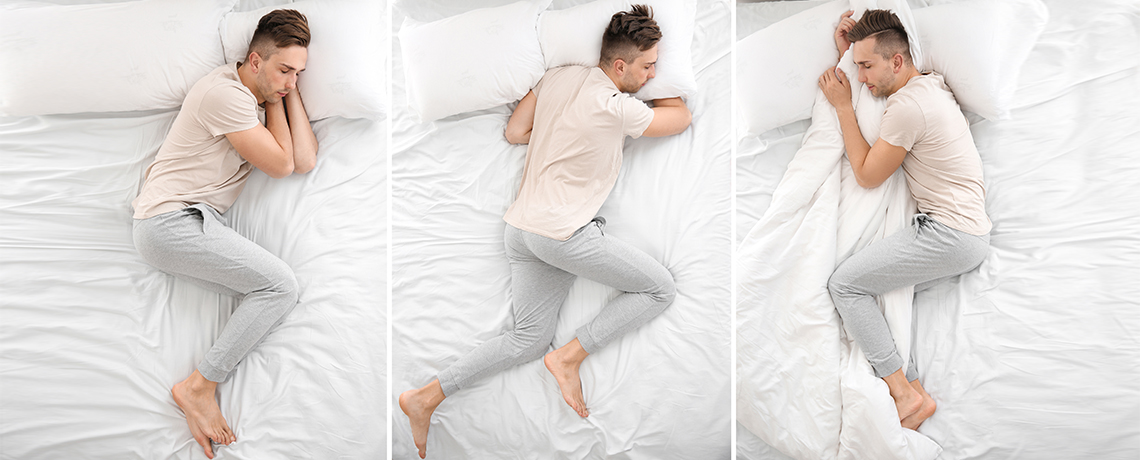


Sleep is regarded as a welcome relief from the pressures and uncertainties that are part and parcel of your day. Unfortunately, the shuteye that gives you relief, regardless of whether you sleep on your back, side or stomach is not free from challenges posed by sleep disorders.
The onhealth.com website defined sleep disorders as “conditions that impair a person’s ability to get normal, restorative sleep,” and warned that they can “have a profound effect on a person’s overall health.”
The website noted a variety of sleeping disorders, among them insomnia, sleep apnea, snoring, narcolepsy and Restless Leg Syndrome or RLS, and other ailments. While these issues can be treated through lifestyle changes such as regular exercise, reduced use of computers, smartphones and other electronic devices, and moderate amounts of food such as cereals and milk or cheeses, sleep positions play a vital role in treating or remedying them.
The sleeping positions are as follows, including their pros and cons in treating the previously mentioned issues.
The webmd.com website observed that the fetal position is favored by “4 out of 10 people…[the fetal position] is a healthy way to doze, because it allows your spine to rest in its natural alignment...The fetal position might also ward off conditions like Alzheimer’s or Parkinson’s.” The website also suggested sleepers make some improvements to the position, which is particularly favored by twice as many women as men, such as stretching and relaxing your back to ease breathing.
The sleep.org website highlighted the downsides of this sleeping position, which can cause stiffness or aches in your joints. “To reduce the risk of discomfort, curl in a relatively loose position or with a pillow between your knees”
Sleeping on the side position is one of the most widespread sleeping positions, with the sleep.org website estimating that children has “a growing preference for the side position when approaching adulthood. Side-sleeping with the arm overhead is the most common position, representing 55 percent of the time asleep in bed.”
The website also found that sleeping on the side, like the fetal sleeping position, “significantly reduces the frequency of sleep apnea breathing irregularities.” sleep.org likewise found that people preferred this sleeping position as they age, as the latter caused a gradual loss of spinal flexibility.
“To lower the risk of GERD problems, patients usually sleep best on their left sides,” the onhealth.com website suggested. Other benefits included remedying snoring and helping to clear your mind.
At first glance, the log position resembles sleeping on the side, except your arms are down and close to your body. The webmd.com website estimated that 15 percent of sleepers use this position, which they say can remedy certain health conditions.
“Resting on your side [in the log position], with your back mostly straight, can help cut down on sleep apnea. It can also nix neck and back pain since your spine stays aligned,” noted the website.
But the onhealth.com website gave the position mixed reviews. “[The log position] may be good for you if you snore, but if you have arthritis, you may wake up in pain.” webmd.com suggested sleepers “place a soft pillow or folded blanket or towel between your knees to ease pressure on your hips,” in case pain is incurred from this position.
When it comes to sleeping, sleeping on your back seems the most natural position. But sleep.org noted that the position is a mixed bag.
“Back-sleeping can promote better spinal alignment and reduce pressure on injured limbs,” sleep.org said. “Studies indicate that sleeping on your back could worsen certain conditions such as snoring and sleep apnea. Back-sleeping is also not optimal for people with heartburn or GERD.” The website also does not recommend the position for pregnant women, particularly those in the third trimester, as it has been connected with stillbirths. The onhealth.com has found that back sleepers “may experience low back pain,” and “can also make existing back pain worse.”
The Webmd.com website suggested to “place a pillow or rolled-up towel under your knees…[as] it supports the natural curve of your spine and can lower your chances of back pain.”
If you habitually sleep on your stomach, a stance also known as a prone or front position, then you belong to a small percentage of sleepers. The sleep.org website said that this position is challenging for most people, especially the elderly, “because of the extra effort required for breathing from the respiratory cage and lack of flexibility in the spinal cord.”
sleep.org highlighted its benefits. ”The prone sleep positions have been found to help treat individuals with respiratory symptoms as a result of Covid-19.” The website recommended sleeping with a flat pillow under the head, pelvis and stomach to keep the spine aligned.
Conclusion
Your sleeping position is vital in determining the quality and length of your sleep. King Koil is aware of this, and is ready to meet your needs with the New Signature Gold Response Series set of mattresses, pillows and other accessories. Marked by the use of high quality materials as well as our collaboration with the International Chiropractors Association (ICA) and the International Sleep Products Association, our products will ensure the comfortable, quality slumber for your body and soul.